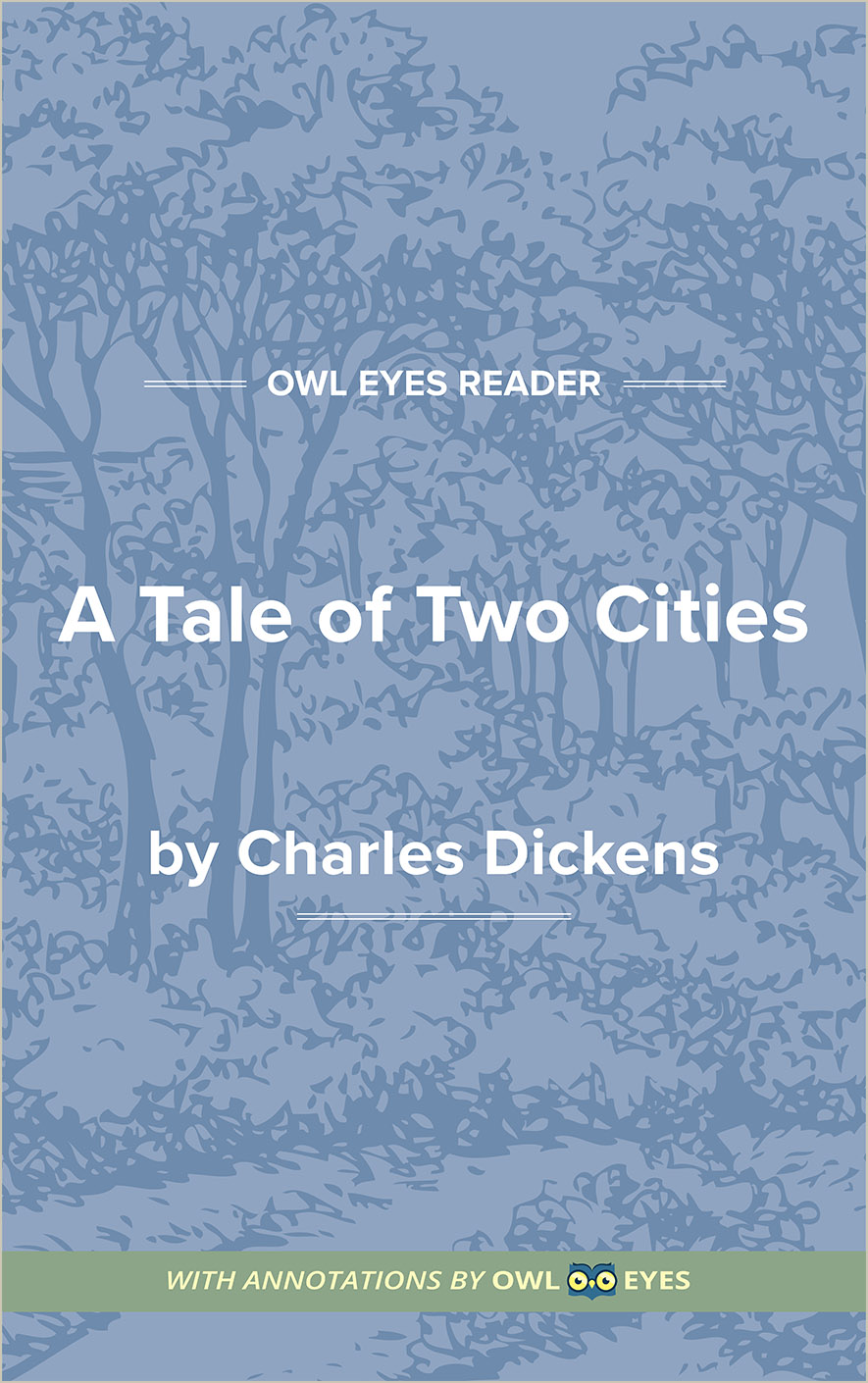Analysis Pages
Symbols in A Tale of Two Cities
Tellson’s Bank: Tellson’s bank symbolizes the oppression and complacency of Britain. Though it is old and successful, this is more due to its reputation rather than its fantastic business; indeed, it is portrayed as unpleasant and refusing to advance with the times. Dickens suggests that Britain’s complacency, like France’s, will soon lead to unrest.
Red Wine: Because of its color, red wine is frequently used to symbolize and foreshadow the blood shed during the French Revolution. Often drunk by revolutionaries, it also suggests the intoxicating effects of revolutionary sentiment that lead to mob mentality and mass, violent cruelty.
Grindstone: The grindstone, used to sharpen weapons, symbolizes the growing maniacal blood thirst of the revolutionaries. As they sharpen their blood-soaked weapons, they become oppressors, just like those they fight against.
Echoing Footsteps of Soho Square: The square that surrounds Dr. Manette’s house is often full of people’s comings and goings. The multitude of people—and the resultant chaos—foreshadows the coming French Revolution.
Marquis St. Evrémonde: The marquis, with his unabashed cruelty and pompous arrogance, symbolizes the tyrannical and violent aristocracy that the revolutionaries wish to overthrow. His death by stabbing signals the country’s growing unrest.
Symbols Examples in A Tale of Two Cities:
Book the First: Recalled to Life - Chapter V
🔒"A LARGE CASK OF WINE..." See in text (Book the First: Recalled to Life - Chapter V)
"red..." See in text (Book the First: Recalled to Life - Chapter V)
Book the First: Recalled to Life - Chapter VI
🔒"Freedom shining on him..." See in text (Book the First: Recalled to Life - Chapter VI)
Book the Second: The Golden Thread - Chapter I
🔒"more respectable..." See in text (Book the Second: The Golden Thread - Chapter I)
"extemporised strong-rooms..." See in text (Book the Second: The Golden Thread - Chapter I)
Book the Second: The Golden Thread - Chapter II
🔒"black cap..." See in text (Book the Second: The Golden Thread - Chapter II)
Book the Second: The Golden Thread - Chapter III
🔒"ACQUITTED..." See in text (Book the Second: The Golden Thread - Chapter III)
Book the Second: The Golden Thread - Chapter IV
🔒"except wine like this..." See in text (Book the Second: The Golden Thread - Chapter IV)
Book the Second: The Golden Thread - Chapter V
🔒"Jackal..." See in text (Book the Second: The Golden Thread - Chapter V)
Book the Second: The Golden Thread - Chapter VI
🔒"disused shoemaker’s bench..." See in text (Book the Second: The Golden Thread - Chapter VI)
Book the Second: The Golden Thread - Chapter VII
🔒"MONSEIGNEUR ..." See in text (Book the Second: The Golden Thread - Chapter VII)
Book the Second: The Golden Thread - Chapter VIII
🔒"steeped in crimson..." See in text (Book the Second: The Golden Thread - Chapter VIII)
"the sun and the Marquis..." See in text (Book the Second: The Golden Thread - Chapter VIII)
Book the Second: The Golden Thread - Chapter IX
🔒"flambeau..." See in text (Book the Second: The Golden Thread - Chapter IX)
Book the Second: The Golden Thread - Chapter XV
🔒"in this vinous feature of his..." See in text (Book the Second: The Golden Thread - Chapter XV)
"vinous..." See in text (Book the Second: The Golden Thread - Chapter XV)
"draw water..." See in text (Book the Second: The Golden Thread - Chapter XV)
"to where the sky rests upon it!..." See in text (Book the Second: The Golden Thread - Chapter XV)
"Versailles..." See in text (Book the Second: The Golden Thread - Chapter XV)
Book the Second: The Golden Thread - Chapter XVII
🔒"and blessed her..." See in text (Book the Second: The Golden Thread - Chapter XVII)
Book the Second: The Golden Thread - Chapter XIX
🔒"a strong and extraordinary revival..." See in text (Book the Second: The Golden Thread - Chapter XIX)
Book the Second: The Golden Thread - Chapter XXI
🔒"golden thread..." See in text (Book the Second: The Golden Thread - Chapter XXI)
"echoing footsteps..." See in text (Book the Second: The Golden Thread - Chapter XXI)
Book the Third: The Track of a Storm - Chapter III
🔒"one knitting...." See in text (Book the Third: The Track of a Storm - Chapter III)
Book the Third: The Track of a Storm - Chapter V
🔒"all red wine for La Guillotine..." See in text (Book the Third: The Track of a Storm - Chapter V)
Book the Third: The Track of a Storm - Chapter XV
🔒"fused in the one realisation, Guillotine..." See in text (Book the Third: The Track of a Storm - Chapter XV)

